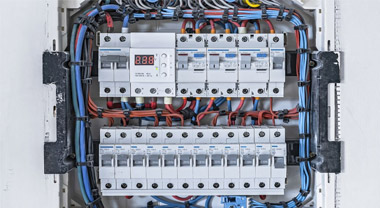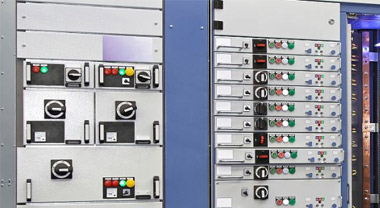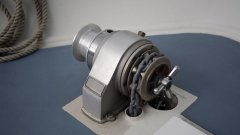Main parameters and characteristics of circuit breakers
The characteristics of circuit breakers mainly include: rated voltage Ue; rated current In; overload protection (Ir or Irth) and short-circuit protection (Im) trip current setting range; rated short-circuit breaking current (industrial circuit breaker Icu; household circuit breaker Icn) )Wait.

Rated working voltage (Ue): This is the voltage at which the circuit breaker works under normal (uninterrupted) conditions.
Rated current (In): This is the maximum current value that a circuit breaker equipped with a special overcurrent trip relay can withstand indefinitely at the ambient temperature specified by the manufacturer, and will not exceed the temperature limit specified by the current-bearing component.
Short-circuit relay trip current setting value (Im): The short-circuit trip relay (instantaneous or short delay) is used to quickly trip the circuit breaker when a high fault current value occurs, and its trip limit Im.
Rated short-circuit breaking capacity (Icu or Icn): The rated short-circuit breaking current of a circuit breaker is the highest (expected) current value that the circuit breaker can break without being damaged. The current value provided in the standard is the root mean square value of the AC component of the fault current. When calculating the standard value, the DC transient component (always appearing in the worst-case short circuit) is assumed to be zero. Industrial circuit breaker ratings (Icu) and household circuit breaker ratings (Icn) are usually given in the form of kA rms.
Short-circuit breaking capacity (Ics): The rated breaking capacity of a circuit breaker is divided into two types: the rated ultimate short-circuit breaking capacity and the rated operating short-circuit breaking capacity. The national standard "Low-Voltage Switchgear and Control Equipment Low-Voltage Circuit Breaker" (GB14048.2—94) provides the following explanations for the rated ultimate short-circuit breaking capacity and rated operating short-circuit breaking capacity of circuit breakers:
The rated ultimate short-circuit breaking capacity of the circuit breaker: According to the conditions specified in the prescribed experimental procedures, excluding the breaking capacity of the circuit breaker to continue to carry its rated current capacity;
Rated operating short-circuit breaking capacity of the circuit breaker: According to the conditions specified in the prescribed experimental procedures, including the breaking capacity of the circuit breaker to continue to carry its rated current capacity;
The test procedure for the rated ultimate short-circuit breaking capacity is O-t-CO.
The specific test is: adjust the current of the line to the expected short-circuit current value (for example, 380V, 50kA), but the test button is not closed, the tested circuit breaker is in the closed position, press the test button, the circuit breaker passes 50kA short circuit current, The circuit breaker is opened immediately (open referred to as O), the circuit breaker should be intact and can be closed again. t is the intermittent time, generally 3min. At this time, the line is still in the hot standby state, and the circuit breaker is turned on again (close, referred to as C) and then opened (O). (The on test is to check that the circuit breaker is at the peak Electrical and thermal stability under current). This procedure is called CO. If the circuit breaker can be completely broken, its ultimate short-circuit breaking capacity is qualified.
The test procedure for the rated operating short-circuit breaking capacity (Icn) of the circuit breaker is O—t—CO—t—CO. It has one more CO than the Icn test procedure. After the test, the circuit breaker can completely break and extinguish the arc, and it is deemed that its rated short-circuit breaking capacity is qualified.
Therefore, it can be seen that the rated limit short-circuit breaking capacity Icn refers to that the low-voltage circuit breaker can operate normally after breaking the maximum three-phase short-circuit current at the outlet end of the circuit breaker and break this short-circuit current again. As for whether it can be normal in the future Switching on and off, the circuit breaker is not guaranteed; and the rated operating short-circuit breaking capacity Ics means that the circuit breaker can break normally for many times when the maximum three-phase short-circuit current occurs at its outlet end.
The IEC947-2 "Low-Voltage Switchgear and Control Equipment Low-Voltage Circuit Breaker" standard stipulates: A type circuit breaker (referring to only overload long delay, short circuit transient circuit breaker) Ics can be 25%, 50%, 75% and 100%. The Ics of class B circuit breakers (breakers with three-stage protection of overload long delay, short circuit short delay and short circuit transient) can be 50%, 75% and 100% of Ics. Therefore, it can be seen that the rated operating short-circuit breaking capacity is a breaking current value smaller than the rated limit short-circuit breaking current.
No matter what kind of circuit breaker, it has two important technical indicators, Icu and Ics. However, as a circuit breaker used on branch lines, it can only meet the rated limit short-circuit breaking capacity. The more common bias is that it is better to take the big, not to take the right, think that the big insurance. However, if it is too large, it will cause unnecessary waste (the same type of circuit breaker, the H type-high breaking type, is 1.3 to 1.8 times more expensive than the S type-ordinary type). Therefore, the circuit breaker on the branch line does not need to blindly pursue its short-circuit breaking capacity index. For the circuit breaker used on the main line, not only must meet the requirements of the rated ultimate short-circuit breaking capacity, but also should meet the requirements of the rated operating short-circuit breaking capacity. If only the rated ultimate short-circuit breaking capacity Icu is used to measure its breaking capacity, whether it is qualified or not, Will bring unsafe hidden dangers to users.
Free trip of the circuit breaker: At any time during the closing process of the circuit breaker, if the protection action turns on the trip circuit, the circuit breaker can be completely disconnected reliably, which is called free trip. The circuit breaker with free trip can ensure that the circuit breaker can be opened quickly when the circuit breaker is closed and short-circuited, which can avoid expanding the scope of the accident.




